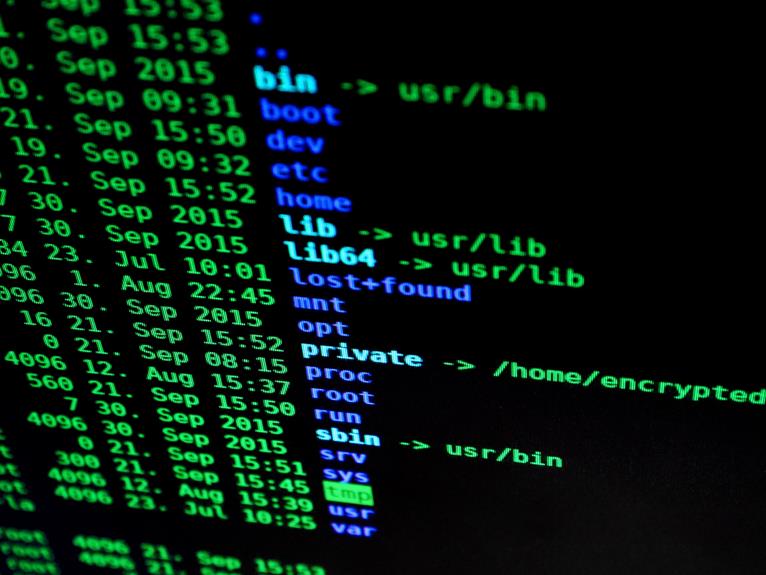Which Baby Monitors Cannot Be Hacked

With the increasing popularity of baby monitors, parents are becoming more concerned about the security of these devices. The thought of someone gaining unauthorized access to the baby monitor and potentially endangering their child is a terrifying prospect.
However, not all baby monitors are created equal when it comes to security. In this discussion, we will explore the features and technologies that make certain baby monitors more resistant to hacking attempts.
From encrypted communication technology to firmware updates and secure Wi-Fi connectivity, we will delve into the factors that ensure peace of mind for parents.
Stay tuned to discover which baby monitors cannot be compromised, and learn how to ensure the safety and privacy of your little ones.
Encrypted Communication Technology
Encrypted communication technology ensures the secure and private transmission of data in baby monitors, eliminating the risk of unauthorized access and hacking. This technology utilizes advanced encryption algorithms to encode the data being transmitted, making it unintelligible to anyone without the necessary decryption key. By implementing this technology, manufacturers provide a robust barrier against potential threats, safeguarding the privacy and security of both the baby and the parents.
The encrypted communication technology used in baby monitors works by converting the data into a cipher text, which can only be deciphered by the authorized receiver using the correct decryption key. This ensures that even if hackers intercept the data during transmission, they will be unable to make sense of it without the decryption key. This adds an extra layer of protection, making it virtually impossible for unauthorized parties to gain access to the sensitive information being transmitted.
Furthermore, encrypted communication technology provides peace of mind for parents who value their freedom and desire a secure environment for their baby. With the assurance that their baby monitor cannot be hacked, parents can confidently use the device without fear of their privacy being compromised. They can rest easy knowing that their baby's activities and well-being are being monitored without the risk of unauthorized access.
Secure Wi-Fi Connectivity
With a foundation of encrypted communication technology, the next aspect to consider is the importance of secure Wi-Fi connectivity in baby monitors.
Secure Wi-Fi connectivity is essential for ensuring that the transmission of video and audio data between the baby monitor and the parent unit remains private and protected from unauthorized access.
To achieve secure Wi-Fi connectivity, baby monitors should support the latest Wi-Fi encryption protocols, such as WPA2 (Wi-Fi Protected Access 2). This protocol provides robust security measures, including encryption algorithms, authentication mechanisms, and access control, to prevent unauthorized users from intercepting or tampering with the data being transmitted.
Additionally, it is crucial for baby monitors to have strong and unique Wi-Fi passwords. Weak or default passwords are an open invitation for hackers to gain access to the monitor's Wi-Fi network and compromise the privacy and security of the system. Parents should be encouraged to change the default password to a strong, alphanumeric combination that is not easily guessable.
Furthermore, regular firmware updates from the manufacturer are essential to address any discovered vulnerabilities and enhance the overall security of the baby monitor's Wi-Fi connectivity. Manufacturers should prioritize security updates and make them easily accessible to ensure that the devices stay protected against emerging threats.
Multi-Factor Authentication
To enhance the security of baby monitors, implementing multi-factor authentication is a crucial step in preventing unauthorized access and ensuring the privacy of the system. Multi-factor authentication adds an extra layer of protection by requiring users to provide multiple forms of identification before gaining access to the monitor.
Here are three key reasons why multi-factor authentication is essential for baby monitors:
- Enhanced Security: By requiring users to provide multiple forms of identification, such as a password and a unique code sent to their mobile device, multi-factor authentication significantly reduces the risk of unauthorized access. This helps protect sensitive information and ensures that only authorized individuals can access the baby monitor.
- Defense Against Password Attacks: Multi-factor authentication helps guard against password attacks, such as brute-force or dictionary attacks. Even if an attacker manages to obtain the user's password, they would still need the additional factor, such as a fingerprint scan or a security token, to gain access to the baby monitor.
- Increased Privacy: Baby monitors with multi-factor authentication provide an extra level of privacy by ensuring that only authorized users can view the live feed or interact with the system. This prevents potential intruders from accessing the monitor and potentially compromising the privacy of the baby and the family.
Firmware Updates and Security Patches
Updating the firmware and applying security patches regularly is crucial to maintaining the security and integrity of baby monitors. Firmware updates are essential as they provide bug fixes, performance improvements, and most importantly, security enhancements. Manufacturers release firmware updates to address vulnerabilities that may be exploited by hackers. These updates ensure that the baby monitor's software is up to date and equipped with the latest security measures.
To keep your baby monitor protected, it is important to regularly check for firmware updates and install them as soon as they become available. Many manufacturers provide instructions on how to download and install firmware updates on their websites or through their dedicated applications.
Security patches are another vital aspect of maintaining the security of baby monitors. These patches are designed to fix specific security vulnerabilities and protect the device from potential attacks. Like firmware updates, security patches should be applied promptly to ensure the highest level of security for your baby monitor.
Password Protection and User Access Control
Continuing the focus on ensuring the security and integrity of baby monitors, an important aspect to consider is implementing robust password protection and user access control measures. These measures are crucial in preventing unauthorized access to the baby monitor system and protecting the privacy of both the parents and the child.
Here are three key considerations for implementing effective password protection and user access control:
- Strong Password Requirements: Baby monitors should require users to create strong passwords that include a combination of uppercase and lowercase letters, numbers, and special characters. This helps to prevent simple password guessing or brute-force attacks.
- Two-Factor Authentication: Implementing two-factor authentication adds an extra layer of security by requiring users to provide a second form of verification, such as a code sent to their mobile device, in addition to their password. This helps to ensure that only authorized individuals can access the baby monitor system.
- User Access Control: Baby monitors should have user access control features that allow parents to grant or revoke access to specific individuals. This helps to prevent unauthorized users from gaining access to the baby monitor system and ensures that only trusted individuals can monitor the child.
Manufacturer's Track Record in Security Measures
When it comes to ensuring the security of baby monitors, it is crucial to consider the manufacturer's track record in implementing security measures.
One key aspect to look for is security certifications and audits, which demonstrate that the manufacturer has taken steps to adhere to industry standards.
Additionally, regular firmware updates and patches are important as they indicate that the manufacturer is actively addressing security vulnerabilities and taking steps to protect user data.
Security Certifications and Audits
Security certifications and audits provide valuable insight into a manufacturer's track record in implementing robust security measures for baby monitors. These certifications and audits serve as a way for manufacturers to demonstrate their commitment to protecting the privacy and security of their customers.
Here are three key reasons why security certifications and audits are important:
- Third-party validation: Certifications and audits conducted by independent organizations offer an unbiased assessment of a manufacturer's security practices. This ensures that the manufacturer's claims about their security measures are accurate and trustworthy.
- Identification of vulnerabilities: Through the certification and audit process, potential vulnerabilities in the baby monitor's security system can be identified and addressed. This helps manufacturers stay ahead of potential threats and ensures that their products are secure.
- Continuous improvement: Security certifications and audits provide manufacturers with valuable feedback on their security measures. This feedback allows them to continuously improve their products and stay up to date with the latest security standards and best practices.
Firmware Updates and Patches
To further bolster their commitment to ensuring the privacy and security of customers, manufacturers of baby monitors also demonstrate their dedication through their track record in implementing firmware updates and patches.
Firmware updates are essential for addressing vulnerabilities and improving the overall security of the device. Manufacturers who prioritize security regularly release updates to address any identified weaknesses and protect against potential hacking attempts.
They also provide patches to fix any bugs or flaws that may arise after the product has been released. A strong track record in promptly delivering firmware updates and patches indicates a manufacturer's commitment to staying ahead of security threats and ensuring the ongoing protection of their customers' privacy.
Frequently Asked Questions
How Does Encrypted Communication Technology Enhance the Security of a Baby Monitor?
Encrypted communication technology enhances the security of a baby monitor by ensuring that the data transmitted between the monitor and the receiver is encrypted and can only be decrypted by authorized devices, thus preventing unauthorized access and hacking attempts.
What Are the Advantages of Having Secure Wi-Fi Connectivity in a Baby Monitor?
Having secure Wi-Fi connectivity in a baby monitor offers numerous advantages. It ensures that the device cannot be easily hacked, protecting the privacy and safety of the child. It also allows for remote monitoring and real-time alerts, enhancing convenience and peace of mind for parents.
Can You Explain What Multi-Factor Authentication Means in the Context of a Baby Monitor?
Multi-factor authentication in the context of a baby monitor refers to a security measure that requires multiple forms of verification, such as passwords, fingerprints, or facial recognition, to access the device. It enhances the security and reduces the risk of unauthorized access.
Why Are Firmware Updates and Security Patches Important for the Security of a Baby Monitor?
Firmware updates and security patches are crucial for the security of a baby monitor as they address vulnerabilities and fix any weaknesses in the system. They ensure that the monitor is protected against potential hacking threats, safeguarding the privacy and safety of both the baby and the parents.
How Does Password Protection and User Access Control Contribute to the Overall Security of a Baby Monitor?
Password protection and user access control are crucial for the overall security of a baby monitor. By requiring strong passwords and limiting user access, the risk of unauthorized access and potential hacking incidents can be significantly reduced, ensuring the safety of the baby and privacy of the family.
Conclusion
In conclusion, when it comes to choosing a baby monitor that cannot be hacked, it is essential to consider factors such as:
- Encrypted communication technology
- Secure Wi-Fi connectivity
- Multi-factor authentication
- Firmware updates and security patches
- Password protection
- User access control
Additionally, it is crucial to assess the manufacturer's track record in implementing robust security measures.
By prioritizing these features, parents can ensure the safety and privacy of their baby's monitoring system.





